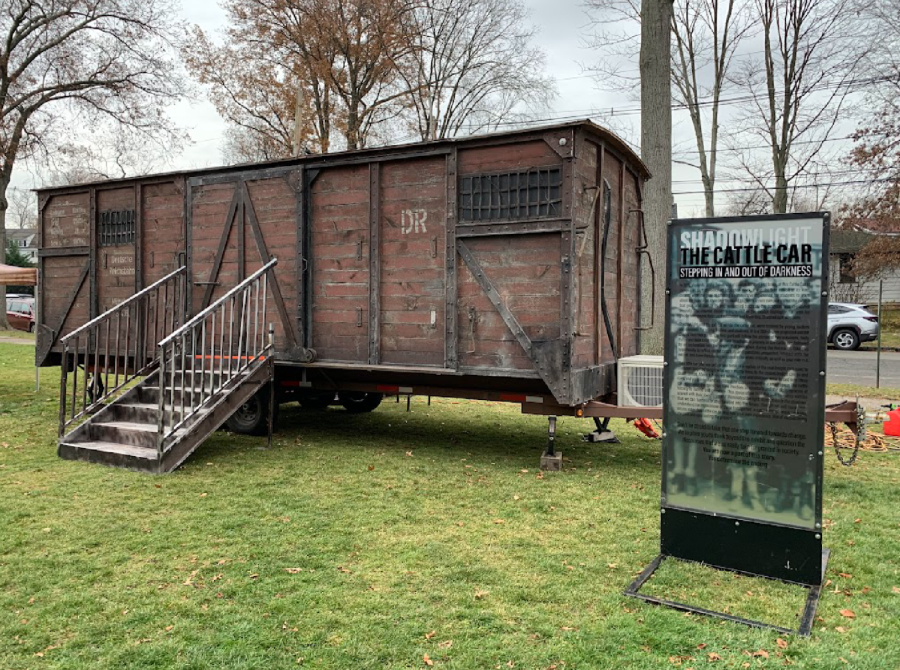Shadowlight: Stepping in and out of darkness
Photo by Jessica Strauss
Shadowlight’s Cattle Car exhibit parked on the front lawn of WHS
On Dec. 6, Shadowlight’s exhibit known as The Cattle Car was parked on the front lawn of WHS. Shadowlight is an organization that works to provide immersive and interactive educational experiences about the Holocaust to help students gain understanding and empathy. Students and staff from the WHS community were invited to experience the exact replica of a WWII cattle car used to transport Jews to concentration and death camps.
The floor of the car is covered in footprints, symbolizing up to 150 individuals who were forcibly crammed into each of the cars used throughout the Holocaust at the start of their deportation journey. Shadowlight’s representatives explain the multi-day journey that many fearfully endured as they headed towards death in over 1000 concentration and death camps. The car’s door is then closed and the 360 degree video projection begins.
Shadowlight’s initiative serves to expose the gruesome history of the Holocaust while posing questions about its impact on our lives today. Shadowlight Educator Madison Marino said, “[The Holocaust] happened in the past, but hate still lives on.”
The cattle car experience contains a series of video and audio contributions that walk the participant through two survivors’ thoughts, feelings and actions as the events of the Holocaust unfolded. Holocaust survivor Nate Leipciger’s story was an integral part of the immersive exhibit. “[The cattle car] is the transition from being a human being to becoming a number of which the Nazis could dispose of at their own will,” he said.
In the library portion of the exhibit, students had the opportunity to explore primary source documents and artifacts, sparking conversations about Holocaust education. Shadowlight’s lead educator, Tara Silberg, said, “Quite often at high schools, we find that this is the first time students are learning about the Holocaust or are hearing a survivor tell their story. I think students are not getting the personal connection to the Holocaust before coming to our exhibit.”
Several WHS students noted the impact this experience had on them and their knowledge of the Holocaust. Senior Grace Kilbourn said, “Shadowlight was unique because in addition to seeing and hearing about the atrocities of the Holocaust, I now have a tangible experience that I can relate to.”
From his personal experience, Leipciger expressed that the Holocaust is recent history and that it requires more education than a chapter in a history textbook. “History is very cold,” he said in the exhibit. “It does not record emotions, feelings and human pathos. It only talks about facts and that’s not enough.”
As the light re-fills the windowless box car and the doors of the exhibit are re-opened, the walls are imprinted with a projection of the phrase “Never Again.” These words, often presented without punctuation, were followed by a question mark, leaving the exhibit’s participants with the responsibility to carry the stories and memories of the survivors with them as they step out of the darkness and return to their lives.
Shadowlight Founder Jordana Lebowitz hopes that by having this event at WHS, Shadowlight will serve to “illuminate a brighter future in the shadows of the past.”


Kim Braun • Dec 16, 2022 at 9:55 pm
Excellent piece. Thank you for highlighting this important exhibit.